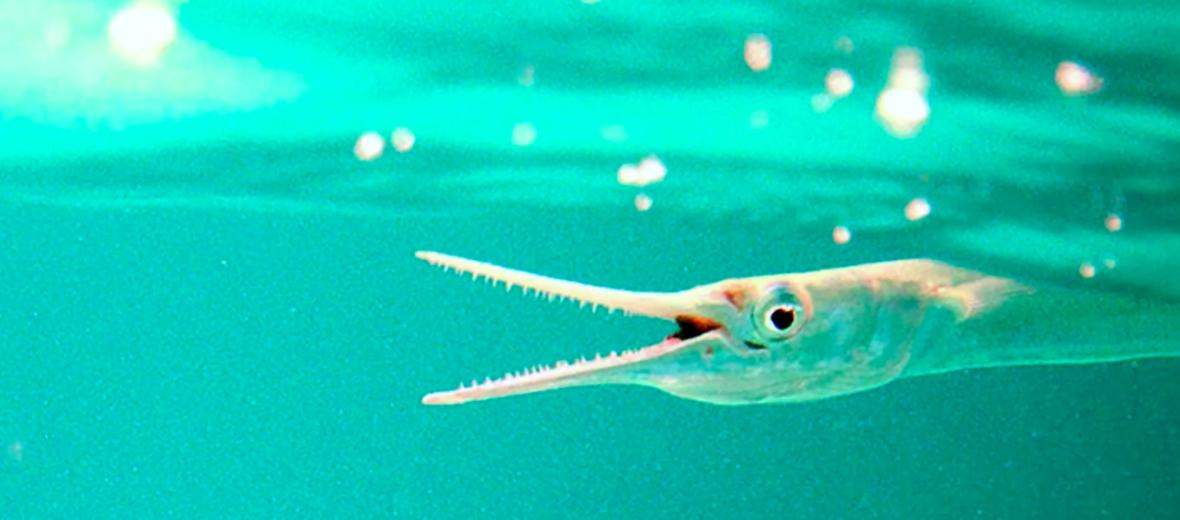
The needlefish, aka long tom or garfish, can be found in shallow marine environments, brackish (mildly salty) habitats, and even in freshwater. Needlefish look a lot like freshwater gars, but are only remotely related to true garfish. Even though they face the threats of pollution and overfishing, these fish are still listed as Least Concern by the IUCN. Their global populations are unknown.
First the Stats…
Scientific name: Belonidae
Weight: Up to 5+ lbs.
Length: Up to 5 feet
Lifespan: Up to 8 years
Now on to the Facts!
1.) These fish can be found primarily in the Atlantic Ocean, Indian Ocean, Pacific Ocean, the Red sea, and the Persian Gulf. But some species can be found in bodies of freshwater.
2.) Juveniles have a longer lower jaw. Adults have an upper and lower jaw that measures the same length.
3.) Their jaws are lined with numerous, needle-sharp teeth.
4.) The juveniles feed on plankton, while adults feed on various fish, krill, cephalopods, and crustaceans.
5.) They can often be seen swimming alongside tuna schools.
But wait, there’s more on the needlefish!
6.) Like all ray-finned beloniforms (flying fish), they are capable of making short leaps from the water. Since needlefish are found swimming near the surface, they often leap over the decks of shallower boats to avoid having to go around them.
7.) Artificial light increases the chance that these fish will jump from the water.
Did you know…?
They can jump out of the water at up to 37 mph!
8.) Fishermen have reported being “attacked” by leaping needlefish. These attacks have resulted in deep lacerations with teeth lodged into their wounds.
9.) In 2010, a kayaker in Florida was nearly killed when a crocodile needlefish jumped from the water and impaled her right in the chest!
10.) There is a smaller species that is commonly kept in freshwater aquariums, that reaches about 15 inches long, as an adult.
But wait, there’s still more on the needlefish!
11.) Females lay, depending on the species, up to 100 eggs each season. These eggs hatch in up to 15 days.
12.) There are approximately 35 species of needlefishes.
13.) These fish attack their prey from the side and then rotate their prey to allow for swallowing head first.
14.) Sea birds, large fish, and sharks all prey on needlefishes.
Now a Short Needlefish Video!
Be sure to share & comment below! Also, check out the Critter Science YouTube channel. Videos added regularly!
Want to suggest a critter for me to write about? Let me know here.
Think you know a lot about critters? Try your hand at these fun, free quizzes:



